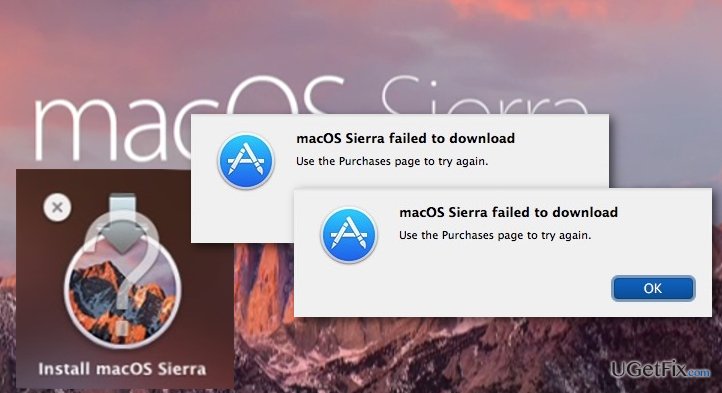
Does this image work on my laptop. I have 3 Gen core i5 and 4 GB Ram. I tried so many artical with. Once the installation is complete, the Mac boots into the clean install of macOS Sierra and begins the setup process.I have lenovo B590 does it possible to install macOS Sierra on it. MacOS Sierra will be installed on the Mac, which can take some time to complete. 11) Select Macintosh HD or whatever you named the boot drive from the list of drives, then click Install.
The method described here actually creates a fully functioning macOS Sierra installation on an external USB device. MacOS Sierra needs its own hard drive partition, a minimum of 10 GB of space is required, but at least 50 GB of space is recommended.Developers have created workarounds to install macOS Sierra on some Mac computers that are no longer officially supported as long as they are packed with a.Keep in mind, this is not the same as using an external device to install macOS, which lets you install macOS from an external USB device. If your computer already has macOS installed, Sierra Installer will update macOS normally, without deleting any of your apps or files. We’ll show you how to set it up.It can be the same computer as the one mentioned in the previous point. You have to try once.Ever wish you could take your Mac with you on an external drive? You can actually install macOS Sierra on an external drive, flash drive, or SD card, then use that device as your macOS system disk wherever you go. Installing macOS Sierra on PC is a bit hard dear Talha.
The new name of the disk is Install macOS Sierra Public Beta. The disk is erased and you will see the desktop icon for it disappear as it is renamed. Or you can take it with you to work or a friend’s house while keeping all your applications and files.Password is entered, and to erase the disk and install Sierra, type Y and press return. Maybe you’re having problems booting into your Mac and you want to try to access the internal drive to do some troubleshooting or back up important files—this will let you do that.
Os Sierra Download The Sierra
Make sure you click “Download” and let it save to your Mac’s hard drive.While that downloads, you can move onto the next section and start getting your external device ready. You can download the Sierra installer in the App Store by searching for “macOS”. So keep that in mind—you probably won’t want this to be your main macOS system.If this still sounds useful to you, though, read on.Second, you’ll need a copy of the macOS Sierra installer. You definitely want to use a USB 3.0 (or USB-C if you’re using a newer Mac) device, and even then, your system isn’t going to be nearly as snappy as your normal internal drive. In addition to that, since there are no backups of the mac’s hard disk required, the process will involve comparatively less hassle.Also, speed will be a limiting factor. For example, your storage capacity is likely to be significantly less than your normal system disk, especially if you use a flash drive.Through this approach, you can run macOS Sierra on any compatible Mac without having to separately download and install it on either one.
You can also give your device an appropriate name, if you want. Then click “Erase”.When the operation is complete, you will see the following message. If there is anything you want to save, make sure you back it up first!Once the drive is unmounted, select the full disk in the left sidebar (labeled “UFD 3.0 Silicon” here)—not the sub-disk(s) under it (labeled “Untitled” here)—and click “Erase” in the top row of buttons.From the resulting dialog, format your device as “Mac OS Extended (Journaled)” and use the scheme “GUID Partition Map”. In our case, our drive is partitioned using Master Boot Record rather than GUID. So, we definitely need to format it.WARNING: Before proceeding, understand that formatting will obviously erase everything on your device. Disk Utility can be found in the Applications > Utilities folder or by searching for it using Spotlight.Once Disk Utility is running, click on your external device in the left-hand pane and check the partition map. To check what format your drive is using (and change it), you’ll need to launch your Mac’s Disk Utility.

Os Sierra Portable MacOS Sierra
Or maybe you want to use your portable macOS installation on another compatible Mac.To boot from your external Sierra drive, plug it into the Mac in question, press the power button, and hold the “Option key until the recovery disk screen appears. How to Boot From Your External macOS InstallationSo let’s say you start having trouble with your internal drive, and want to troubleshoot it. But you don’t want it looking for that external drive every time you turn your Mac on normally.Like we said, an external macOS installation will probably be pretty slow and you’re probably only going to want to use it when the situation calls for it, such as if you’re having trouble with your internal drive or you want to use your portable macOS Sierra installation on another compatible Mac. It will probably be pretty slow and you’re probably only going to want to use it when the situation warrants, like when you’re troubleshooting your Mac.



 0 kommentar(er)
0 kommentar(er)
